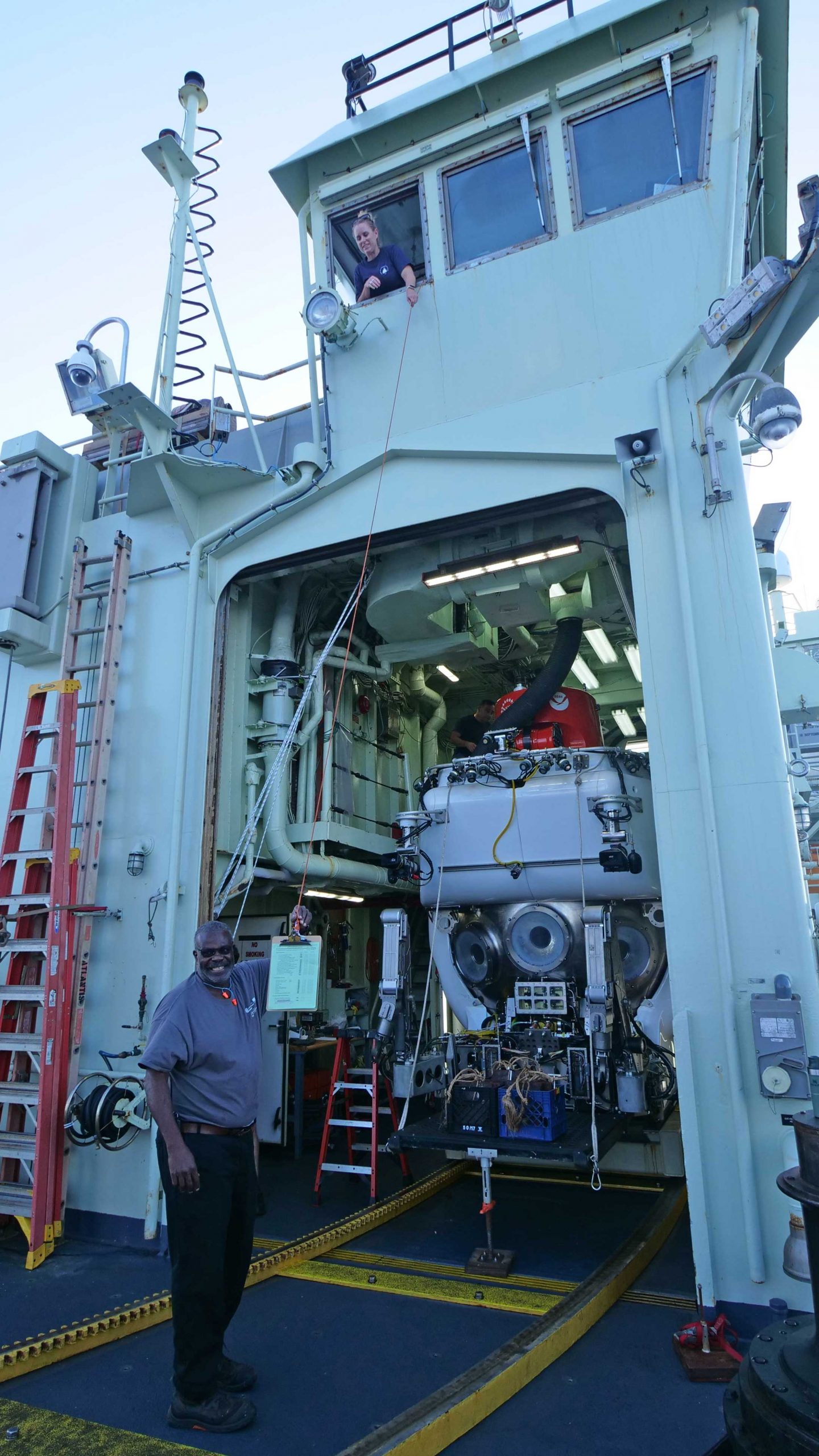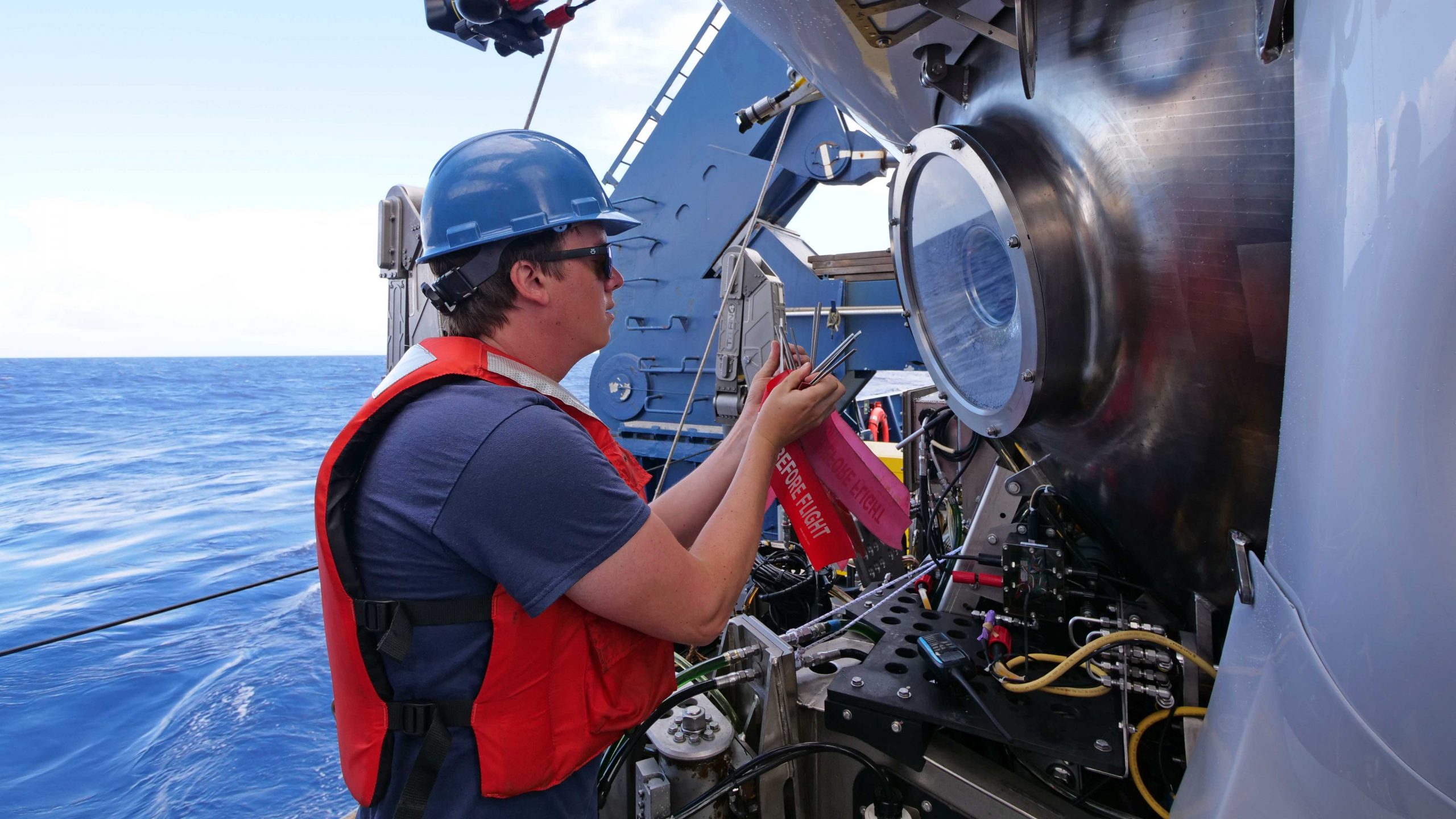“Alvin Diving:” What it takes to get the sub in the water
Years can elapse between the time that a scientist writes a grant proposal and the day Atlantis actually arrives over a chosen dive site. That period is almost entirely unscripted and in the hands of the team that makes up the science party on the ship, as well as many others on shore.
Once Atlantis arrives at a designated site, however, everything depends on a well-practiced and long-honed set of procedures, one that is overseen by the day's designated Launch Coordinator and by the ship's captain and chief engineer-and that includes support from everyone on the ship. The process culminates with the much-anticipated announcement of "Alvin diving" and the sub's slow descent into the depths.
Below is a timeline of events that take place leading up to a typical launch time of 8:00 a.m. on Dive Day. Note that some items occur concurrently in different places on the ship and in the sub, while others occur sequentially.

Evening before dive
- Ship arrives on-station and, if time permits, surveys the dive site with multibeam sonar. If the autonomous underwater vehicle (AUV) Sentry is on board, it will often conduct high-resolution seafloor surveys overnight the night before a dive so that the pilot and observers can refine their plans.
- Tools and testing equipment for science on the sea floor loaded into the basket on the front of Alvin
Morning of Dive
5:00
- Pilot enters the sub to do pre-dive and internal checks
- Galley prepares and packs lunches for divers
6:00
- Pilot, Launch Coordinator, and Alvin Team begin pre-dive preparations and external checks of sub, including communications, propulsion, lights, cameras, and manipulators

7:00
- Ship's engineer on watch begins below-deck checks and warms up A-frame hydraulics
- Officer on watch lowers ship's bow thruster and navigation transceiver
- Breakfast
7:15
- A-frame control is passed to Dog House above the fantail to begin operational checks
- Deck crew warms up the small boat engine and swimmers load gear into boat
- Sub loaded with lunches, science gear, personal items
7:30
- Sub rolls out on deck
- Weight stacks loaded on sub
- Small boat positioned for launch

7:45
- Skins attached and sub positioned under A-frame at the stern of the ship
- Launch Coordinator positions A-frame over sub, connects main and tail lines, and confirms main latch connection
- Ship's main propulsion secured
- Boarding bridge put in place and pilot enters sub for final checks
- Pilot tests weight releases and Launch Coordinator removes pins from weight stacks
- Small boat launches and stands by at stern of ship

7:55
- Observers enter sub
- Pilot closes and seals hatch
- Swimmers board sub
- Ship begins final approach to launch site at 1.5 knots from 200 meters downwind
8:00
- Launch Coordinator completes final radio checks and requests clearance from captain to launch the sub
- Sub lifted free of its cradle and out over stern of the ship
- Main line tensioned and main latch released; swimmers confirm release and sub lowered
- Swimmers remove main line and tail line; sub is free of ship
8:05
- Swimmers remove science basket safety lines and open three main ballast vent isolation valves
- Swimmers leave sub
8:10
- Pilot completes underwater communications check with Top Lab, tests weight releases, confirms status of life-support and communications, verifies depth, and requests clearance to dive
- Surface Controller announces final depth so pilot can set descent timer and gives permission to dive when swimmers are clear of the sub
- Small boat driver confirms swimmers clear
- Pilot announces "Alvin diving" and vents ballast tanks.
